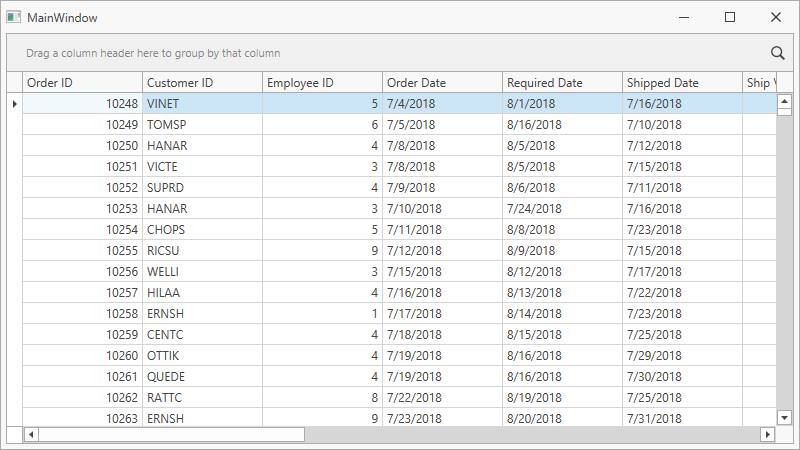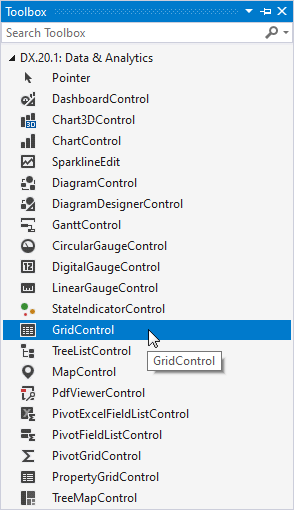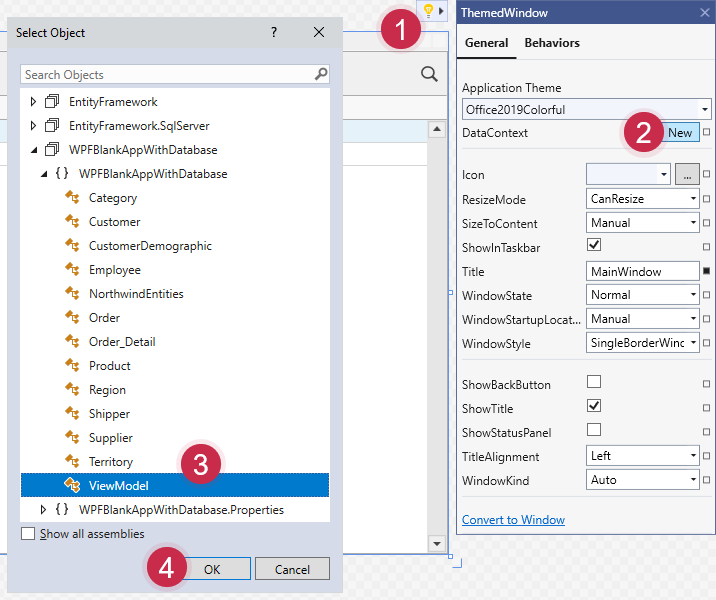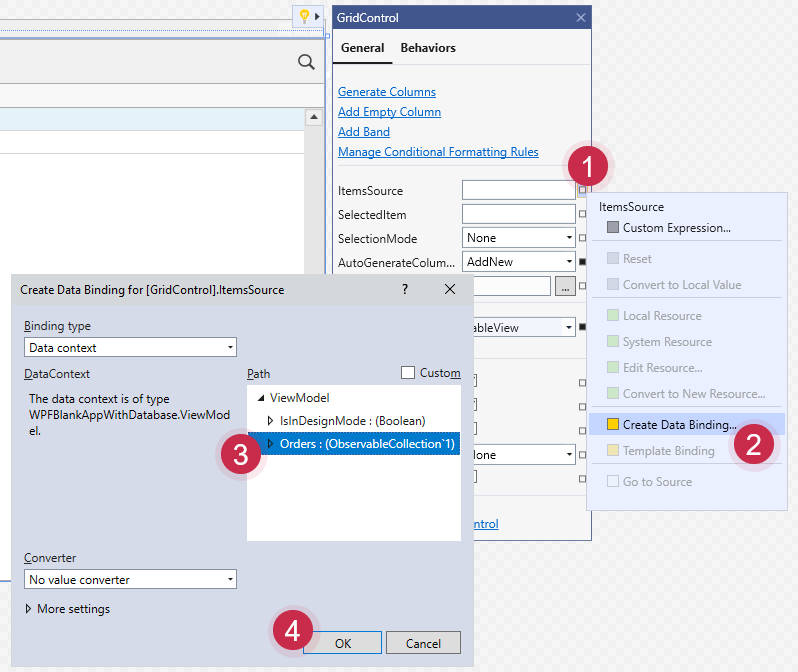Lesson 1 - Add a GridControl to a Project
- 2 minutes to read
This tutorial demonstrates how to add a GridControl to your project and bind the control to a database:

Download the following blank sample project with an adjusted database connection:
Create a ViewModel:
using DevExpress.Mvvm; using System.Collections.ObjectModel; using System.Data.Entity; namespace WPFBlankAppWithDatabase { public class ViewModel : ViewModelBase { NorthwindEntities northwindDBContext; public ObservableCollection<Order> Orders { get => GetValue<ObservableCollection<Order>>(); private set => SetValue(value); } public ViewModel() { northwindDBContext = new NorthwindEntities(); if(IsInDesignMode) { Orders = new ObservableCollection<Order>(); } else { northwindDBContext.Orders.Load(); Orders = northwindDBContext.Orders.Local; } } } }Note
To use the Order object’s properties at design time without a direct database connection, add an empty Orders collection to the ViewModel.
Add the GridControl toolbox item to your project:

Visual Studio performs the following actions:
Adds the following references to the project:
- DevExpress.Data.Desktop.v21.2
- DevExpress.Data.v21.2
- DevExpress.Mvvm.v21.2
- DevExpress.Printing.v21.2.Core
- DevExpress.Xpf.Core.v21.2
- DevExpress.Xpf.Grid.v21.2
- DevExpress.Xpf.Grid.v21.2.Core
Generates the code below:
<dx:ThemedWindow xmlns="http://schemas.microsoft.com/winfx/2006/xaml/presentation" xmlns:x="http://schemas.microsoft.com/winfx/2006/xaml" xmlns:dx="http://schemas.devexpress.com/winfx/2008/xaml/core" xmlns:dxg="http://schemas.devexpress.com/winfx/2008/xaml/grid" x:Class="WPFBlankAppWithDatabase.MainWindow" Title="MainWindow" Height="450" Width="800"> <dxg:GridControl AutoGenerateColumns="AddNew" EnableSmartColumnsGeneration="True"> <dxg:GridControl.View> <dxg:TableView/> </dxg:GridControl.View> </dxg:GridControl> </dx:ThemedWindow>
Build the solution to make the ViewModel class visible in the window’s Quick Actions.
Open the ThemedWindow‘s Quick Actions and specify the window’s data context:
Tip
You can use the Document Outline Window to select an element for which to invoke Quick Actions.

You can also define the window’s data context in code:
<dx:ThemedWindow ... xmlns:local="clr-namespace:WPFBlankAppWithDatabase"> <dx:ThemedWindow.DataContext> <local:ViewModel/> </dx:ThemedWindow.DataContext>Open the GridControl‘s Quick Actions. Click the rectangular button next to the ItemsSource property and select Create Data Binding. Specify the binding:

To bind the GridControl to data in code, specify the DataControlBase.ItemsSource property:
<dxg:GridControl AutoGenerateColumns="AddNew" EnableSmartColumnsGeneration="True" ItemsSource="{Binding Orders}"> <dxg:GridControl.View> <dxg:TableView/> </dxg:GridControl.View> </dxg:GridControl>Run the project. The GridControl generates columns for all fields from a bound data source:
